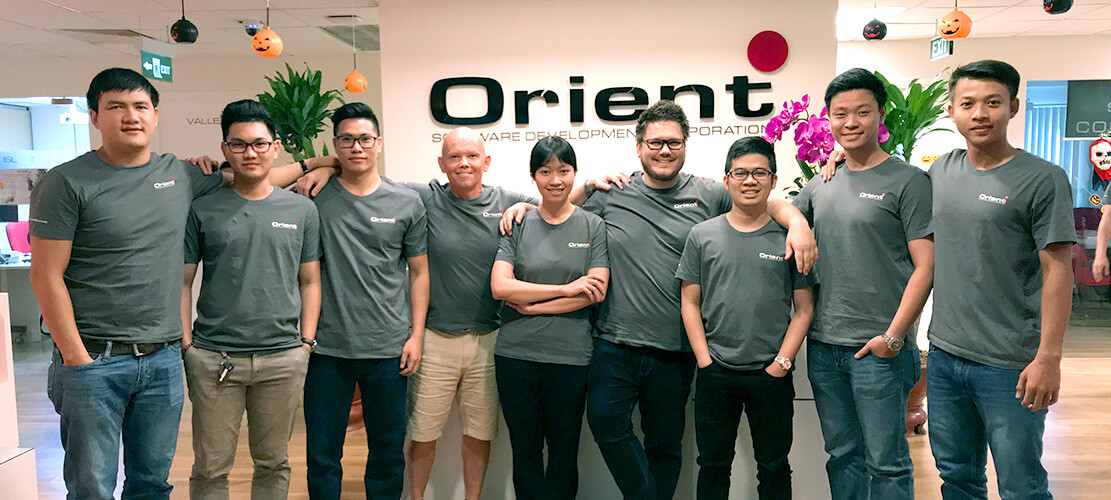Understanding the Global Software Outsourcing Market

Content Map
More chaptersThe global software outsourcing market thrives on collaboration. The market is made up of clients that hire software development companies, onshore and offshore, to develop a wide range of software products for their individual projects, business, or organization. There are many advantages and disadvantages to outsourcing, so due diligence is vital to a successful outcome.
Understanding the state of the global software outsourcing market, including the benefits, trends, global rates, and hiring process, can help you integrate outsourcing into your global strategy.
What is Software Outsourcing?
Software outsourcing is the practice of hiring a third party to handle all your software needs. Typically, the third party in question is a software development company, one with multiple specialist roles that oversee each step of the process, from planning and design to deployment and maintenance. Outsourced software development companies may assist with a few tasks or be in charge of the whole project, depending on project scope and client requirements.
Benefits of Software Outsourcing
Reduced costs
By hiring an offshore software development company, one that is based in a region where the average salary and hourly rate are lower than your own, you may be able to slash development costs – without compromising on product quality and time-to-market. For North American clients, the average hourly rate for a mid-level software developer is $61 USD. Therefore, they could save on money if they hire a developer from the Asia & Pacific region, where the average hourly rate for a mid-level software developer is $41 USD and up. Outsourcing can also save you money as there is no need to pay for employee benefits such as paid leave and health insurance.
There are many examples of tech companies outsourcing to reduce operating costs. In 2012, the U.S. multinational investment corporation, Citigroup, cut 11,000 onsite IT jobs, and moved some of those roles to lower-cost offshore sites, which, among other actions, helped save the company about $900 million. And in 2009, before WhatsApp secured $250,000 in seed funding, it outsourced its software development to Eastern Europe, where Russian iOS Developer, Igor Solomennikov, helped create the very first iOS version of WhatsApp. Igor eventually relocated to California in 2013 to join the rest of the WhatsApp team.
Access to specialist global talent
Expanding your search to the global stage can help you secure specialist talent, people who possess knowledge that might be in short supply in your region. This enables you to quickly address skill and expertise shortages. It can also help foster a more diverse workforce which can lead to higher product innovation, cultural diversity, employee engagement, better decision making, and faster problem-solving. Diversification can also boost creativity by exposing teams to multiple perspectives and worldviews, potentially opening doors to new, inventive ideas to help push technological boundaries forward.
According to Diversity Wins, the third in a series of reports by McKinsey on the business case for diversity, the latest report revealed that companies that prioritized gender diversity and ethnic diversity in executive teams had a higher likelihood of financial outperformance by 25 percent and 36 percent respectively. Research has also shown that software developers who do not strive to be inclusive can lead to creating designs that unintentionally exclude certain populations.
Faster time-to-market
Good outsourced software development companies have fully trained, qualified, and experienced staff who are ready to work. They take the time to understand your needs, use that information to band together, form a suitable development team, and deliver your software product on time, on budget. This can be much faster than hiring in-house, where you need to prepare a job description, advertise the new role, read resumes, interview candidates, and integrate successful candidates into the fold. Instead, the third party takes care of the project management side of things, so you can focus on your business. As a result, you streamline the development process, and reduce your time to market.
Experts predict that software development outsourcing will grow to 70 percent by 2023, according to the 2022 State of Tech Staff reporting from Commit. The two main motivations for outsourcing software development were being easier to scale and resize teams (42 percent of respondents) and it being a more efficient utilization of time (39 percent of respondents).
Current Global Software Outsourcing Trends
Estimated growth forecast
There are many signs the global software outsourcing market is in a significant growth stage. The global IT professional services market size was valued at USD 777.28 billion in 2021 and is expected to register a compound annual growth rate of 11.2% from 2022 to 2023, according to a market analysis report from Grand View Research. The same report overview also states that the “rise of automation” and “radical shifts in consumer demand” are pushing companies to implement more IT services into their practices.
According to a 2020 global survey by McKinsey & Co, 66 percent of business leaders across a range of industries were implementing automation into at least one business process. Meanwhile, a consumer study report by IBM found hybrid shopping to be the primary buying method for 27 percent of consumers and 36 percent of Gen-Z, thus emphasizing the importance of digital transformation particularly in retail.
In addition, the demand for outsourced IT functions has raised considerably, with JavaScript developers, DevOps engineers, and Web developers being among the most in-demand tech roles. This, when combined with the current US tech talent shortage, means that outsourcing software development to offshore third parties will be more necessary than ever, especially if companies are to embrace digital transformation and meet customer demand.
Rates Comparisons Between Countries
Below is a brief breakdown of the different hourly rates, pros and cons, and main tech hubs that exist in different parts of the world.
North America
The median annual salary for a software developer in North America is $110,140 according to US News, resulting in an average hourly rate of $55 USD.
Pros: High English language proficiency, political and economic stability
Cons: High annual salaries and hourly rates
Main tech hubs: San Diego, California (Silicon Valley); Austin, Texas (home to AMD, Adobe, Amazon, and Apple); and Dallas, Texas (home to Capital One, Bestow, TeamSupport, and ServiceNow.
England
The median annual salary for a software developer in England is £48,842 according to Indeed, resulting in an average hourly rate of £24.
Pros: High English language proficiency, political and economic stability, and strong IT revenue of 2.5 billion British pounds.
Cons: Potential time zone conflicts
Main tech hubs: London, Manchester, and Liverpool.
Asia & Pacific
The median annual salary for a software developer in the Asia & Pacific region is approximately $38,768 USD, resulting in an average hourly rate of $19 USD. Rates can vary considerably depending on what part of the Asia & Pacific region you choose.
Pros: Competitive hourly rates, socio-economic stability, strong investments in IT development.
Cons: Potential time zone, cultural, and quality standard differences.
Main tech hubs: India, China, the Philippines, Vietnam, and Singapore.
Australia
The median annual salary for a software developer in Australia is $110,000 AUD, resulting in an average hourly rate of $56 AUD.
Pros: High English language proficiency, quality software development standards.
Cons: Potential time zone conflicts, more relaxed working attitude.
Main tech hubs: Sydney, Melbourne, and Brisbane.
Africa
The median annual salary for a software developer in Africa is R 600,000 ($33,929 USD), resulting in an average hourly rate of R 308 ($17.42 USD).
Pros: High number of software developers (approx. 716,000), strong English language proficiency, strong experience in web and mobile development.
Cons: Potential time zone, cultural, and quality standard differences.
Main tech hubs: Lagos, Cape Town, Nairobi, Cairo, and Johannesburg.
Eastern Europe
The median annual salary for a software developer in Eastern Europe is $108,680 USD, resulting in an average hourly rate of $55 USD.
Pros: Wide tech talent pool (approx. 8.4 million professional developers), compatible time zone differences
Cons: Socio-economic instability, higher-than-average hourly rate
Main tech hubs: Poland, Bulgaria, Belarus, and Romania.
Latin America
The median annual salary for a software developer in Latin America is $88,920, resulting in an average hourly rate of $45 USD.
Pros: Wide talent pool (over 1 million developers), popular technologies include JavaScript, HML5, PHP, Python, and C#, and compatible time zone for US clients.
Cons: Complex taxation policies, political instability, and increasing costs.
Main tech hubs: São Paulo, Buenos Aires, and Rio De Janeiro.
Global Software Outsourcing: Step-by-Step Guide
Define Your Goals
Establish the type of software product you wish to have built, be it a web, mobile, or desktop application. Consider the technology stack as well, including your choice of tools, frameworks, programming languages, and more. If unsure, a good software development company will help define your technology requirements, explaining their rationale in clear, easy-to-understand terms.
Think about what your target audience will want in your software product too. What is their estimated age, gender, technical expertise, and expectations of your software product? This knowledge will help you deliver a product that meets and exceeds audience expectations.
Choose Outsourcing Company
Settle on your preferred country of origin for the outsourced software development company. From there, use search engines to find potential candidates in your ideal region. Thoroughly examine their website, learn about their unique selling points, key services, team, technical expertise, and portfolio. Ideally, they should have experience in projects similar to yours, and the ability to deliver similar outcomes. Then, reach out to them to arrange a consultation.
Present Scope of Work
During the initial consultation, the software development company will take the time to understand your needs. Make sure you are prepared to answer questions such as your ideal objectives, deliverables, scope, content, and budgets. They will take this information and propose a plan that fits your needs and budget. You can then decide whether to proceed or not.
Development and Progress Monitoring
Once the guidelines have been established and contracts have been signed, the software development company will get to work. They will keep you updated on each step of the process, from design to programming to testing to deployment. They may require your feedback on key creative decisions, such as designing UI elements. Make sure you’re available to provide this input, as it will help steer the team in the right direction.
Testing
Once the software product is near completion, the team will undergo thorough testing. They will test various aspects of the software product, including performance, usability, device compatibility, security, and more. Any potential flaws or shortcomings should be identified and resolved prior to launch.
Launch and Ongoing Support
From there, the team will take care of the deployment and post-launch support. They will arrange for the launch of the software product on your preferred platforms, be it Windows, Mac, Android, or iOS. These launches may be simultaneous or spread out over a period of weeks or months, depending on the timeline. Ongoing support will be provided in the form of minor patches and more significant software updates. The length of time for post-launch support will depend on your scope and budget.
Global Software Outsourcing: Wrapping Up

Global software outsourcing has experienced significant growth over the years, especially in light of the COVID-19 pandemic, which has accelerated the switch to remote and hybrid working models and bolstered the need for international third-party support on software development projects.
In fact, IT spending on enterprise software is expected to reach 517 billion USD worldwide, a growth of 10.8 percent compared to two years ago. Therefore, digital transformation is increasingly becoming a priority for businesses across a range of industries around the world, which means plenty of opportunities for hiring clients and outsourced software development companies to collaborate and develop exciting new software products.







